Content
At first glance, it may seem that the question of what are the benefits and harms of GMOs is rhetorical, since any packaging in the supermarket has a corresponding label that the content of this component is absent. It means: harmful. However, the WHO opinion does not provide an equally clear answer. The media are also spreading opposing views on this topic of the dangers of GMOs to human health. What is true and what is false can be understood only on the basis of facts.
What is GMO
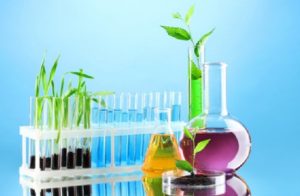
GMO stands for a genetically modified organism, the DNA of which has undergone a purposeful change by means of genetic engineering. Typically, the goals of such experiments are related to scientific or economic benefit.
The first modified products in 1994 were tomatoes from California, whose shelf life was increased by simply removing the gene responsible for the rotting property. However, the consumer did not appreciate the innovation, and after 3 years the product was removed from the market. In the 90s of the XX century, using the method of genetic engineering from the ring spot virus in Hawaii, the culture of papaya was saved by placing the antigen of the virus in its DNA. This helped to make it sustainable and ultimately save the region's harvest.
Genetic engineering methods are considered by the UN Food and Agriculture Organization (FAO) as necessary technologies in the development of the agricultural sector. Such direct gene transfer is a new stage in the development of breeding technologies that create new varieties of plants and animals by transferring traits and properties to non-interbreeding species.
The question of the benefits or harms of genetically modified foods is related to the purpose of the methods. Three-fourths of the modifications of the main plant species - soybean, rapeseed, corn, wheat, potato - are carried out with the benefit of increasing their resistance to the effects of pesticides used to control weeds and insects, as well as to remove plants with resistance to insects and viruses. Another useful purpose of GMOs is the creation of new products with improved high-quality vitamin and mineral composition: for example, with an increased content of vitamin C or beta-carotene.
How GMOs are made
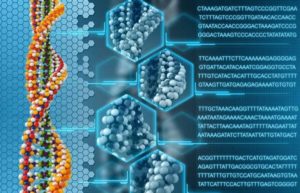
The process is based on the creation of so-called transgenes - DNA fragments that are transferred into the body, the properties of which they want to purposefully change. Moreover, several transgenes can be added to GMOs.
The gene, or a fragment of the DNA chain, which is responsible for the required property, is “combined” with the help of special enzymes (restriction enzymes and ligases) in the required combination, including the insertion of special regulators that can turn off its work. Thus, it is possible to "program" the desired properties in the original, mutable organism by such "assembly" of genes from other biological species that do not interbreed either in natural conditions or by selection methods.
Are there any benefits from GMO products?
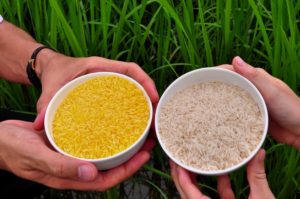
Oddly enough, this may sound in the light of well-established stereotypes about the dangers of GMOs, but under controlled conditions, genetic engineering, like selection, is a tool that provides undeniable benefits for humans.
The story of the modified Hawaiian papaya is a useful example. However, fear of the uncontrolled use of technology in the production of products that could also harm humanity has spilled over into the Greenpeace protest movement. Activists accusing geneticists of directing experiments to obtain genetically modified foods against the laws of nature and therefore posing a threat to human health, destroyed papaya trees at the University of Hawaii, which gave the problem a wide public outcry.
However, the arguments of opponents of GMOs about the dangers of using technology in food production are not recognized by science as sound, since it is believed that nature also contains a certain percentage of random mutations, and in addition, breeding methods that are flawless in terms of benefits are essentially aimed at creating the same “genetically modified "organisms.
At the beginning of this century, data from studies of Japanese scientists on transgenic papaya confirmed the absence of chain sequences in its protein corresponding to known allergens. Thereafter, Japan opened up the market for GMO products for this crop, thus introducing important evidence into the controversy regarding the benefits of genetic engineering for human health. In addition to the ability of GMO technologies to protect against the harm of viruses to plants and humans, they can also improve the beneficial properties of products.
For example, a group of scientists from Switzerland developed "golden rice" containing beta-carotene from the introduced transgenes of daffodils - in order to enhance the beneficial properties against vitamin A deficiency - a phenomenon common among residents of Asian regions. These experiments met with public accusations that such GMO rice is carcinogenic. However, such criticism has not yet been reflected in official WHO documents, while the benefits of a 100-gram portion of golden rice have been proven to cover 120% of the need for vitamin A.
Harm of GMO products
During the existence of GMO technology, a number of facts have accumulated about the negative impact of modified products on health:
- The potential harm of GMOs lies in the consequences of the impact of transgenic products on the associated species of other plants, insects, and animals.
- Some GMOs contain genes that give plants the ability to maintain resistance to antibiotics, which can subsequently be transmitted to humans.
- Critics of GMO technology believe that a combination of several genes is responsible for the yield, which cannot be modeled by genetic engineering. Thus, the yields of modified crops of corn, wheat and rapeseed in the United States (where GMOs are widespread) give lower rates with a higher pesticide load than in Western Europe (where there are bans on GMO products) for the same types of cereals.
- The change in the properties of GMO crops for resistance to herbicides influenced an increase in the use of the latter by 15 times. One of these drugs, glyphosate, is recognized by the WHO as a carcinogen, which, according to 2016 data, was detected in 70% of people in the United States. And the increased use of herbicides, in turn, influenced the emergence of super-weeds resistant to their action.
- Data from the Human Genome Research Institute (USA) showed that changes in one gene in the body cause changes in other genes according to the domino principle, the nature of which is difficult to predict.
- Polyamines are substances with toxic, allergic and carcinogenic properties that indicate decomposition in corpses: their increased content is noted in GMO corn.
- Transgenes enter the bloodstream without being completely degraded in the gastrointestinal tract: this has been established by studies conducted in Hungary. A study of human serum samples showed the presence of the highest concentration of such DNA in those suffering from intestinal inflammation.There is also evidence of a connection between foods containing GMOs with an increase in cholesterol, body weight, weakening of immunity, damage to the genitourinary, cardiovascular systems - to an increase in the risk of congenital pathologies.
- Increased mortality. In 2012, scientists at Caen University in France, after a year and a half of feeding rats with GMO food, came to the conclusion that transgenic crops have an effect on increasing mortality in the population.
Use of GMOs in Europe and Russia
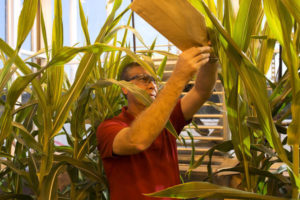
The sowing area of GMO crops is increasing every year. According to 2013 data, they accounted for almost half of the agricultural land in Russia.
In 2010, scientists from the Institute of Ecology and Evolution. Severtsov Russian Academy of Sciences conducted an experiment that revealed the effect of GMO soy on the body of hamsters. The results were eloquently frightening: hamsters in the third generation showed developmental delays, leading to their non-viability, and half of the individuals lost reproductive ability. Scientists emphasize the incorrectness of direct transfer of the meaning of data to the human body, but it has hardly been proven for animals.
In Russia, the production of GMO products is prohibited by the Federal Law of July 3, 2016, but these bans are lifted for the import and sale of 17 GMO lines, the leaders of which are soybeans and corn. Complete rejection of GMOs in Russia is impossible due to WTO requirements. However, permission can only be obtained based on the results of a comprehensive safety test for 80 items.
In addition, according to the Law on Consumer Rights, modified products above 0.9% of transgenes must be accompanied by a special label “containing GM components”.
The world leader in the production of GMO products is the United States, where not only there are no barriers to this, but also campaigns to increase confidence in transgenic products are being actively pursued.
In Europe, there is officially a ban on the cultivation of GMOs, but trade is allowed. At the same time, Finland, Greece, Switzerland, Poland have established strict bans on the use of GMOs in animal feed, while in Russia, Ukraine, France, Germany and Sweden it is practiced: in particular, the content of GMO soybeans in feed reaches 60%.
Products containing GMOs
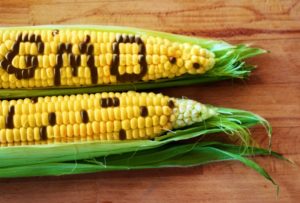
- In addition to papaya, tomatoes, soybeans, corn and rice, experiments on changing properties were carried out: with oilseed rape, cotton, sugar beets, potatoes, bananas, and aruses.
- Tomatoes are known for their modifications to accelerate ripening, potatoes are known for enhancing their starchy properties.
- Experiments are also carried out with animals: there is information about New Zealand cows whose milk was enhanced with hypoallergenic properties; about Chinese cows giving milk with a reduced amount of lactose in the composition.
- However, this is only a fraction of what we know. Animals can receive feed with GMOs, which can further influence their characteristics. Thus, the content of soybeans in livestock feed according to various sources in Europe reaches 60%. Transgenes can be transferred through the intestine to the spleen, blood leukocytes, and liver. There are known cases of finding the content of traces of GMOs in milk of cows, veal and pork.
- Chocolate containing lecithin from GMO soybeans, as well as the so-called lecithin, vegetable fats can conceal possible harm to the body
- Baby food and breakfast cereals are food categories that can also include GMO cereals.
- Honey is also on the list of probable GMO foods, with modified oilseed rape often present in its varieties.
- Dried Fruit - May be coated with transgenic soybean oil to extend shelf life.
Consumer Tips for Choosing Non-GMO Foods
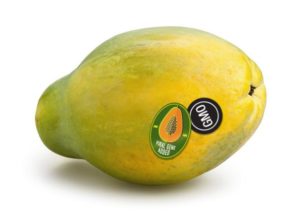
The problem of identifying GMO products is in the absence of obvious signs of their content: this can be done in a laboratory, and the analysis process takes up to 1.5 days. Several rules will help to distinguish GMOs when buying products in a store:
- You should carefully read the composition of the products on the packaging and, in order to avoid harm, it is better to reinsure yourself and avoid those that contain ingredients based on soy and corn: soy and corn flour, oil and starch, as well as tofu cheese, lecithin (E322), hydrolysis of commercial vegetable protein and polenta.
- Fruit markings. It will be useful to get in the habit of checking the special code on the fruit labels. It usually contains 4 or 5 digits indicating the properties of a particular variety.
- The habit of buying products from trusted sources will be beneficial: for example, in organic food stores, where you can check the certification of a product, the probability of buying GMOs is much lower.
- If possible, it is useful to grow food on your own plot. However, in this case, you need to check the planting material for GMOs.
- In fast food and low-budget stores, there is a high risk of encountering harmful GMOs, since transgenic foods are primarily associated with cheap varieties.
- The harm of additives in baked goods can be reduced by checking for the presence of "flour improvers", ascorbic acid, dough impregnation: in essence, these are GMO enzymes with additives.
- It is also difficult to identify GMO components in dairy products, as in the meat of animals that were raised on transgenic soybeans or corn. You should give preference to healthy organic dairy products. Margarine should be discarded altogether in favor of organic butter.
- Regular chocolate also contains E322 soy lecithin. You can protect yourself from its harm by switching to organic chocolate.
- Food additives in the form of preparations, vitamins should also be subject to control for the composition, as well as the reputation of the manufacturer.
- Deaths have been reported from the use of the transgenic supplement Tryptophan or "non-animal insulin".
- Honey must also be thoroughly tested for composition. Better to avoid imported products or labeled as “multi-country”
- Dried fruits should not be treated with vegetable oils.
- A special risk factor for the content of harmful GMOs in the above products manufactured in the USA and Canada. At the same time, Finnish-made products with GMO-free labeling, such as the Valio brand, can be trusted.
Conclusion
Thus, the benefits and harms of GMOs in foods remain a topic around which heated debate does not stop. Examining the issue deeper, we can conclude that genetic engineering is a tool that can have a beneficial or harmful effect, depending on the purpose of its use. The main danger of both the negative impact of GMOs on human health and the global genetic pollution of the planet is that the process of removing plants and animals with desired properties from control is out of control.

